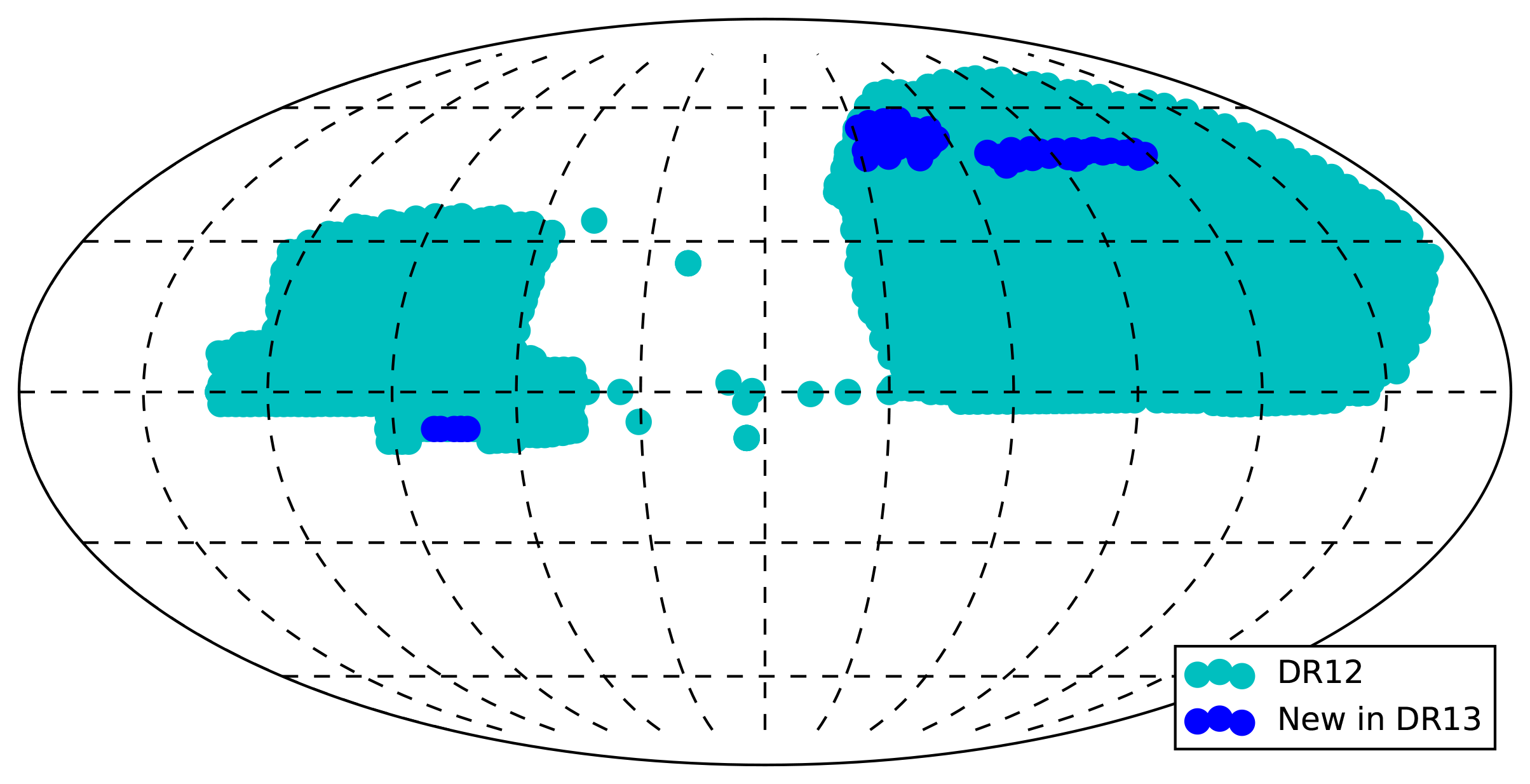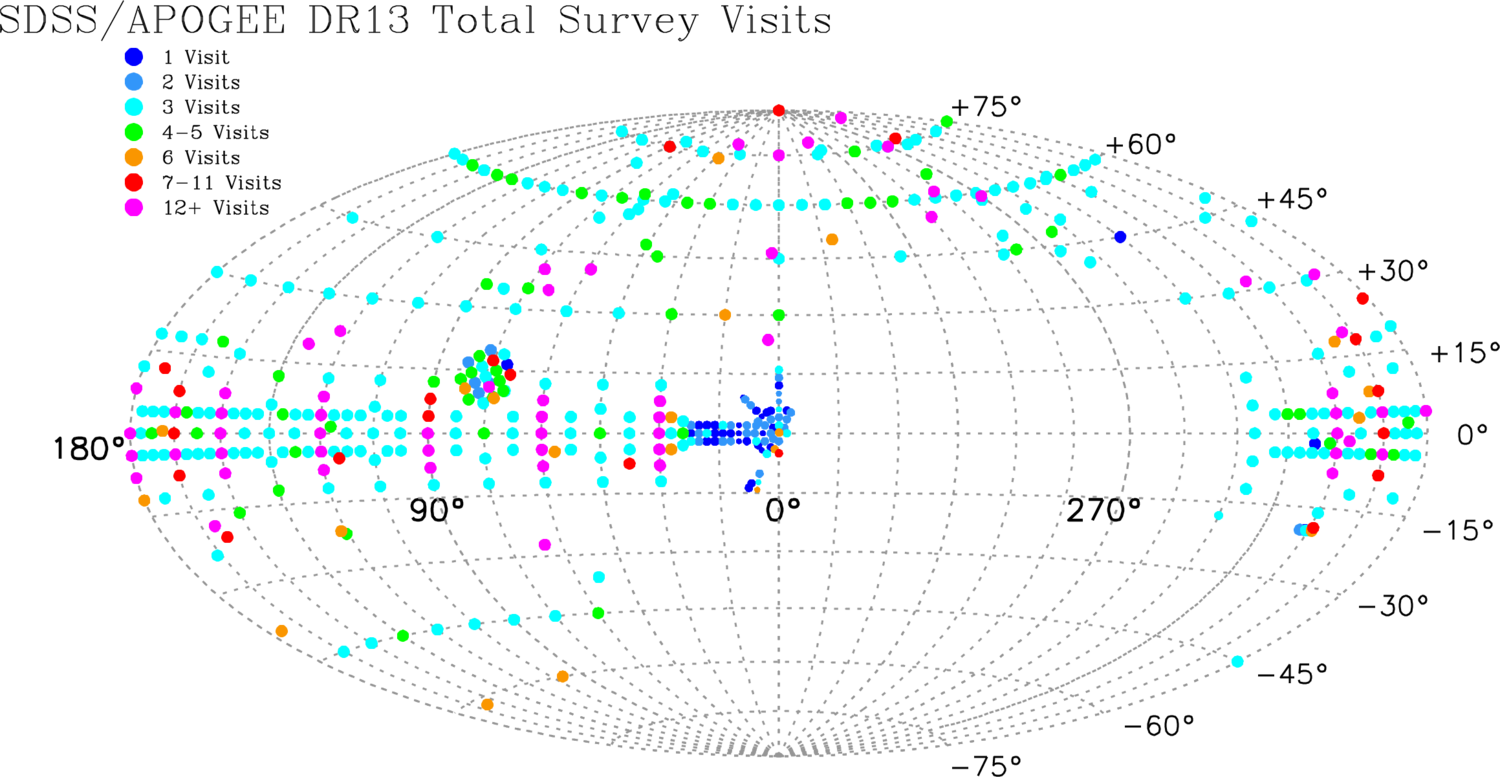What’s New in DR13
Data Release 13 (DR13) is the first release of the Sloan Digital Sky Survey IV. DR13 contains additional extragalactic optical spectra, improved reductions and newly-added abundances for stellar infrared spectra, and datacubes for an entirely new type of data – integral field spectroscopy across the face of nearby galaxies.
Extragalactic spectra
The SDSS’s component Baryon Oscillation Spectroscopic Survey has completed its six-year mission to map the Universe with the baryon acoustic oscillation (BAO) feature in the large-scale structure of the Universe, using data from both galaxy clustering and the Lyman-α forest.
Since DR12, BOSS spectroscopic coverage has been largely complete in two large contiguous regions in the Northern and Southern Galactic Caps. The SDSS’s research into extragalactic and astronomy now continues with BOSS’s successor project, the extended Baryon Oscillation Spectroscopic Survey (eBOSS).
Data Release 13 includes data from a transitional project between BOSS and eBOSS called the Sloan Extended Quasar, ELG, and LRG Survey (SEQUELS), designed to test target selection algorithms for eBOSS. Some SEQUELS data was released in DR12; DR13 includes the complete SEQUELS dataset. The first release of eBOSS data will occur with Data Release 14 in July 2017.
BOSS and SEQUELS spectra are available through both the Science Archive Server (SAS) and the Catalog Archive Server (CAS). For more information on the new DR13 BOSS/SEQUELS data, see:
Infrared spectra with elemental abundances
APOGEE is a large-scale survey of Milky Way chemistry and kinematics. High-resolution infrared (H-band) spectroscopy allows APOGEE to bypass interstellar dust extinction to provide a large, uniform database of precision stellar measurements throughout the galaxy, from the central bulge to the halo.
For DR13, prior APOGEE spectra and data products (from DR10-12) are being re-released using improved data processing and abundance pipelines, including more accurate telluric absorption corrections. In addition to best-fiting values of global stellar parameters, APOGEE also provides individual elemental abundances, with CI, P, TiII, Co, Cu, Ge, and Rb newly added to DR13.
APOGEE infrared spectra are available through both the Science Archive Server (SAS) and the Catalog Archive Server (CAS). For more information on the new DR13 APOGEE data, see:
Integral field spectra for nearby galaxies
MaNGA is an integral-field spectroscopic survey that will map 10,000 galaxies in the nearby Universe. DR13 is MaNGA’s first public data release, and contains datacubes and row-stacked spectra (RSS) for 1351 unique galaxies.
MaNGA observes galaxies with fiber bundles that vary in size from 19 to 127 fibers (12 to 32 arcsec diameter on sky); larger bundles target larger galaxies, resulting in a uniform radial coverage. As a result, the number of spectra within each data cube and RSS file will vary depending on the fiber bundle size.
The MaNGA data cubes and row-stacked spectra are available through both the SAS and the CAS. For more information on the new DR13 MaNGA data, see:






